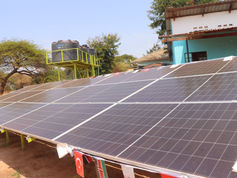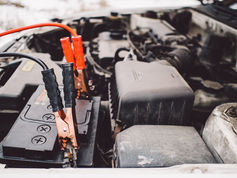The Race for Long-Duration Energy Storage
- Otto Gunderson

- Jun 3
- 4 min read
With the phasing out of many coal and oil power plants worldwide scheduled for the next several years, renewable energy generation is set to replace them. However, this will not be possible without a cost-effective long-term energy storage solution. The growing interest in long-duration energy storage (LDES) is the result of several interacting factors. These include addressing the current challenge of intermittency, which continues to hinder the development of wind and solar energy. Secondly, new technologies for longer-term storage could put the US within reach of China, which continues to dominate current lithium-ion battery production. Lastly, further investment and increasing the availability of information on storage solutions will help to derisk and demystify the industry.
While there may not be a single technology used for decarbonizing, many of the new technologies will seek to solve one overarching problem: intermittency. Intermittency, wherein solar energy can only be harnessed when the sun is shining and wind energy only when the wind is blowing, is one of the most significant challenges that must be addressed to create a sustainable green economy. Renewable projects will become increasingly viable by allowing for the charging of long-duration storage batteries during peak renewable production and discharging them over the course of hours when electricity is required.
This is becoming increasingly true as more renewable energy projects opt to incorporate battery storage during commissioning. Chris McKissack, CEO of Fullmark Energy, explained how integrating battery storage into renewable projects can be a major factor in reducing price volatility and surges. Additionally, as distributed generation continues to enter the marketplace, more battery storage will be needed to enhance grid reliability.
While lithium-ion batteries will no doubt continue to play a major role, several new technologies have thus far demonstrated validity. One of the most exciting possibilities is flow batteries, a technology with a well-suited application in LDES. Battery start-ups, including XL Batteries and Quino Energy, use a flow battery architecture to build energy storage systems suited for long-term storage. Flow batteries offer a low cost for longer-duration storage, easily accessible materials, and a technology that can be easily scaled.
Another technology that may be well-positioned for emergence in LDES is Zinc-Ion Batteries. Like flow batteries, the required materials are available across the globe. In the case of zinc, it is mined and refined in over 45 countries. Zinc-flow batteries have a possible storage of 100 hours, far surpassing the current definition of long-term storage
While the most obvious application for many LDES technologies is as a grid backup, slow-moving utilities continue to hamper rapid adoption. Thomas Sisto, CEO and Co-Founder of XL Batteries, outlined several other instances where new energy storage technologies could find early adopters. These include heavy industries, such as mining, which continue to rely on diesel generators. Creating markets that can facilitate the scaling of these technologies is particularly important for new battery technologies, which have an inherently high cost barrier to entry.
One of the most common concerns with battery development is access to required materials. This is particularly true for Lithium-Ion batteries, where China dominates production, and the required materials are centered in only a few countries. China currently controls between 70-90% of the entire battery value chain, from mineral extraction, processing, and battery manufacturing. The best hope for avoiding a continued reliance on Chinese battery imports will be the development and commercialization of the new energy storage technologies currently under development.
The challenge of bringing a new energy storage technology to market is in large part due to the immense start-up costs. As Rajan Kumar, CEO and Founder of Ateios Systems, explained, one key challenge in developing new energy storage technology is the need for rapid scalability while minimizing additional expenses. The Ateios method of light-based electrode manufacturing, combined with roll-to-roll processes, can be adjusted for various battery chemistries. However, the hundreds of millions of investment dollars required to build a battery manufacturing plant may hinder US storage development and manufacturing. Ateios, therefore, chose to partner with the Battery Innovation Center in Indiana as a way to test and develop production methods while keeping costs low.
Like any other aspect of clean energy, long-duration storage is not a one-size-fits-all. Accurate measurement of different systems is crucial for selecting appropriate storage systems that match renewable projects. Ravi Manghani explained how Anza, a software program with BESS product procurement and analytics, enables the standardization of information on energy storage systems by creating a platform that compares lifecycle costs and product specifications, all with the goal of risk elimination and improved selection. To encourage the widespread adoption of battery storage systems, all this data must be readily available to project developers. Theis platform provides information on BESS companies' track records, allowing customers to estimate their payment terms for cash flow projections, and ensuring safety.

The possible deployment of LDES systems over the next 15 years is staggering. A McKinsey model found that by 2040, between 1.5-2.5 TW of power capacity could be deployed through LDES. On top of that, the economic investment could reach US$ 3 trillion and be responsible for storing 10 percent of all electricity consumed. It is difficult to overstate the importance of long-duration energy storage in the transition to a green economy, and both countries and industries would be well served by investing in these technologies.













Comments